Historic England releases updated At Risk register
Twenty four sites in the region have been added to Historic England’s Heritage at Risk Register, the annual snapshot of the health of England’s historic places.
Sites in the North West added to the register include the Salford church in which Emmeline Pankhurst got married and a section of the Settle to Carlisle railway conservation area. Sites previously at risk that have been saved include a chapel in Manchester by Charles Barry and Coniston’s Copper Mines.
In all, 19 North West sites have been removed from the register this year, a year in which Historic England spent £994,743 in the region.
This year marks 20 yeas of the Heritage at Risk Register, which was set up with the ai of shining a light on buildings most in need of help. More than two thirds of entries on the original 1998 Register have been rescued, including 15 in Manchester alone. Many of the remaining third of entries have seen great progress despite being the hardest cases to solve, Historic England said.
In 2018, more places of worship have been added than removed in the region. Greater Manchester is one of two places in England, along with Suffolk, that hopes to benefit from the Taylor Review £1.8m pilot scheme recently launched to see listed places of worship repaired and improved.
Highlights from this year’s register in the North West:
SITES ADDED
St Luke’s Church, Weaste, Salford
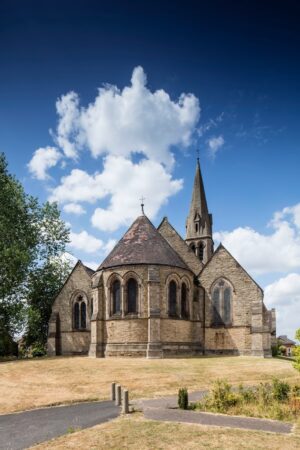 This grade two-listed Gothic Revival church, designed by Sir George Gilbert Scott and built in 1865, is a new addition to the 2018 Register due to damage caused by a leaking roof. Suffragist figurehead Emmeline Pankhurst got married at the church in 1879. St Luke’s is one of 139 places of worship on the register in the North West.
This grade two-listed Gothic Revival church, designed by Sir George Gilbert Scott and built in 1865, is a new addition to the 2018 Register due to damage caused by a leaking roof. Suffragist figurehead Emmeline Pankhurst got married at the church in 1879. St Luke’s is one of 139 places of worship on the register in the North West.
Settle to Carlisle Railway conservation area
The 1870s-built 78m route across northern England is widely held to be one of the most beautiful railway routes in Britain. One section of the conservation area on the approach into Carlisle is being added to the register this year due to the deteriorating condition of a number of buildings, including the former London Road Goods Station. Carlisle City Council is carrying out an appraisal of their section of the conservation area to review its boundary and to develop a long-term strategy to remove it from the register and regenerate the area.
Duck decoy pond, Hale, Halton
Hale Duck Decoy Pond is an artificial pool dating from the 17th century and repfesents a rare Northern example of this type of decoy pond.
Haslington Hall, Cheshire
Some of the structure of this black and white timber framed country house dates back to 1480. The grade one-listed building has been added following a fire in March, with major repairs now needed. Cheshire East Council took immediate action in working with the owner to protect the building from further damage and is now working with the Receiver on implementing other urgent repairs.
SITES SAVED
Former Welsh Baptist Chapel, Chorlton on Medlock, Manchester
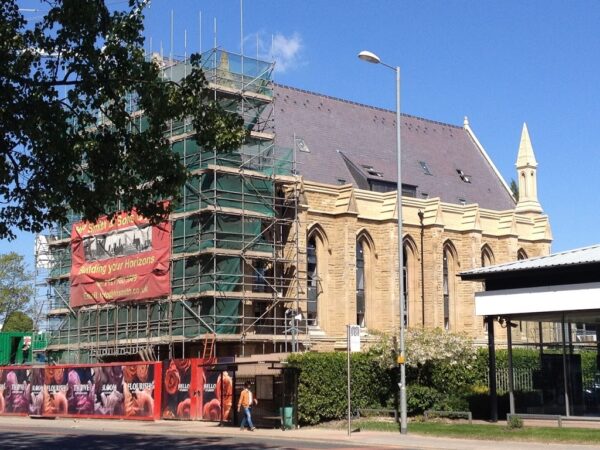
Then derelict, the grade two-listed chapel was on the original 1998 Register, but has been removed following extensive repairs and conversion of what was a roofless ruin into student accommodation. The site was derelict before construction work began to bring this building back to life. Designed by Charles Barry it was constructed between 1837 and 1839.
Coniston Copper Mines
A Heritage Lottery Fund grant enabled a two-year project to conserve the remains here, where more than 150 items were in need of repair and reconstruction. The mining of copper in Coniston started towards the end of the 16th century and in 1859 the Coniston Railway was opened to transport the copper ore. Copper mining, which had fostered the growth of Coniston, stopped in 1914.
Holy Trinity Church, Southport
The 1913-completed church suffered as a consequence of Southport’s maritime climate, with erosion developing over the years, eventually leading to the building going onto the register in 2015. The congregation, aided by the HLF’s Grants for Places of Worship programme, has raised the funds for a series of repair programmes spanning 25 years.
PROGRESS MADE
Leigh Spinners Mill, Leigh, Wigan
With help from a £252,000 Historic England grant, Leigh Spinners Building Preservation Trust has overseen a project to waterproof the roof of one half of this enormous mill, protecting and attracting business occupiers With grant funding from Sport England, a number of sporting facilities are about to open in the mill, including archery, table tennis and carpet bowls.
Hooton Hangars, Ellesmere Port
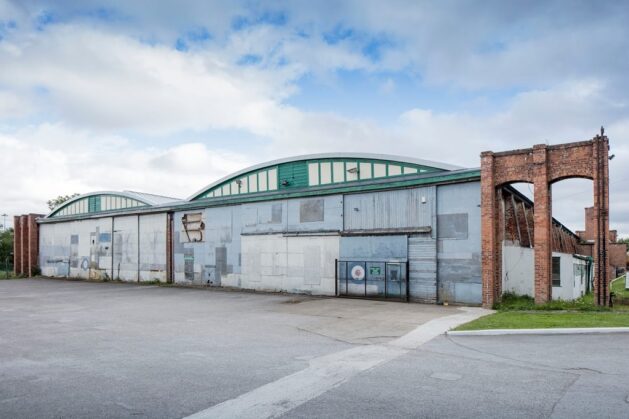
The final phase of works has begun on two of the three listed Belfast Hangars, following restoration work made possible by £643,000 in grant funding. During the First World War, the War Department requisitioned land at Hooton Park which by 1917 was the home of Royal Flying Corps squadrons where pilots trained for action in France. They were also used in the Second World War and subsequently by Vauxhall.
Blackpool Winter Gardens, Lancashire
Works are well underway on the repair of the roof of the Spanish Hall. Eager to see it saved for future generations, Historic England has given a £500,000 grant towards the £1.2m renovation. Dating back to 1875-8, the grade two-listed Winter Gardens have been on the register for many years. The complex, which includes the Spanish Hall, Pavilion Theatre, Opera House and Floral Hall sits in the heart of Blackpool.
North West 2018 statistics
- 116 buildings or structures – (Grade I and II* listed buildings and structural scheduled monuments)
- 139 places of worship
- 91 archaeology entries (non-structural scheduled monuments)
- 7 parks and gardens entries
- 66 conservation areas
…are at risk of neglect, decay or inappropriate change.
HIGHLIGHTS: 20 years of the At Risk register
Historic England said that 63% of the 104 sites in the North West that were on the original register have been rescued and removed over the years, while 58 sites that have been on the register since the beginning remain. Successes include:
Ancoats mills, Manchester
A collection of six textile mills were all removed from the register by 2014 following works to transform them into homes and office space, with partners including Manchester City Council, Ancoats Urban Village Company, HLF, Ancoats Building Preservation Trust and the NWDA.
Gaskell House, Manchester
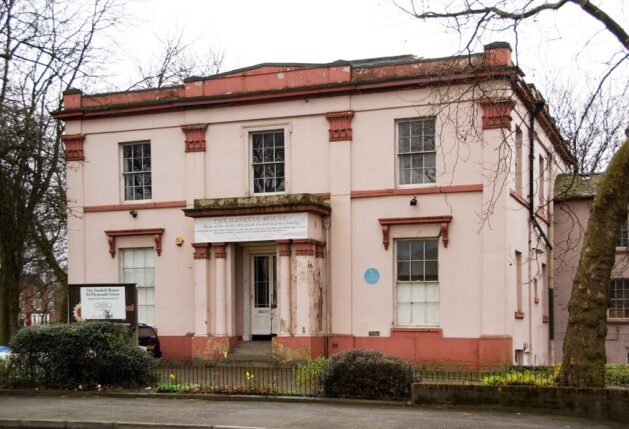
Regency villa, once home to novelist Elizabeth Gaskell, that was taken over in 2004 by the Manchester Historic Buildings Trust. Historic England grant funded two phases of repairs to save the property from further degradation. The Heritage Lottery Fund then came to the rescue, providing grant support resulting in community and teaching facilities, together with a museum about the Gaskell family that was completed in 2014.
Royal Insurance Building, Liverpool
This former commercial building in central Liverpool, where the insurance papers for the Titanic were signed, was on the register in 1998. Liverpool City Council purchased the building in 2012 before passing it onto a developer who converted it into the Aloft Liverpool hotel. It was taken off the register in 2014, assisted by a HE grant of £300,000 to repair the building’s roof.
Midland Hotel, Morecambe, Lancashire
Opened in 1933 as the UKs first art deco hotel, the Midland was closed in 2000 before reopening in 2008 thanks to an £11m investment programme led by Urban Splash.
Lion Salt Works, Cheshire
A £10m project transformed the Lion Salt Works, creating a museum dedicated to telling the story of salt. The project, managed by Cheshire West and Chester Council, was made possible by grant support from HLF, while HE also provided £300,000 grant funding and advice. The site was removed in 2015.
Charles Smith, heritage at risk principal in the North West, said: “Over the past 20 years we have used the Heritage at Risk Register to highlight places in need of care and attention. We have dedicated time, expertise and money to bring cherished places back into use and we are proud to have played our part in saving them from neglect.”


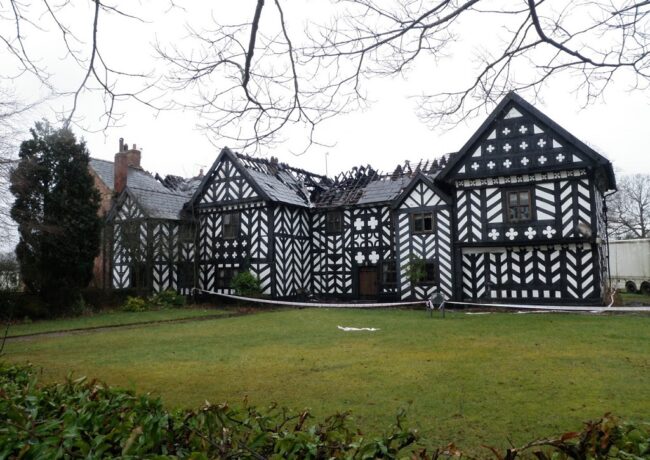


What about Baguely Hall, Wythenshawe? It is in a right state.
By Henry Tudor